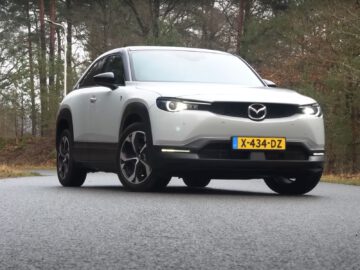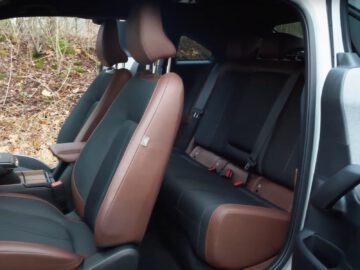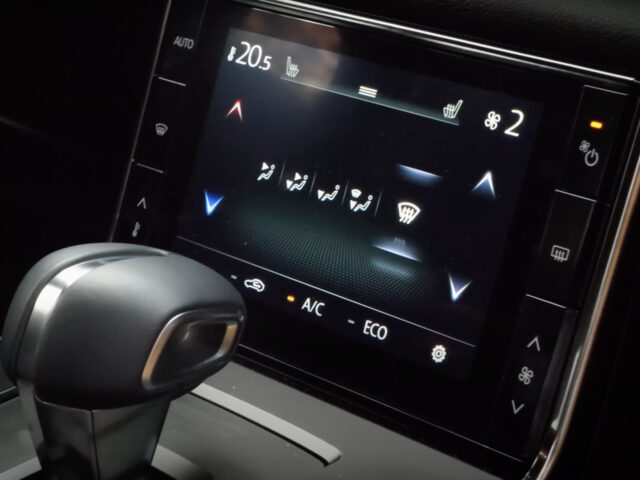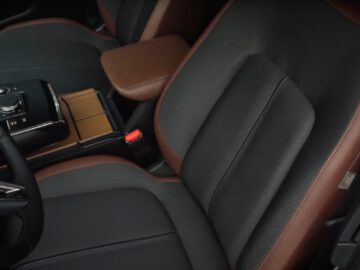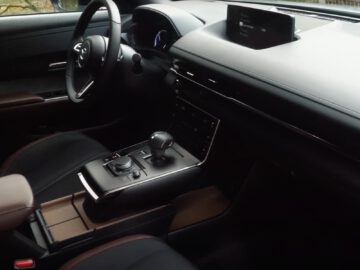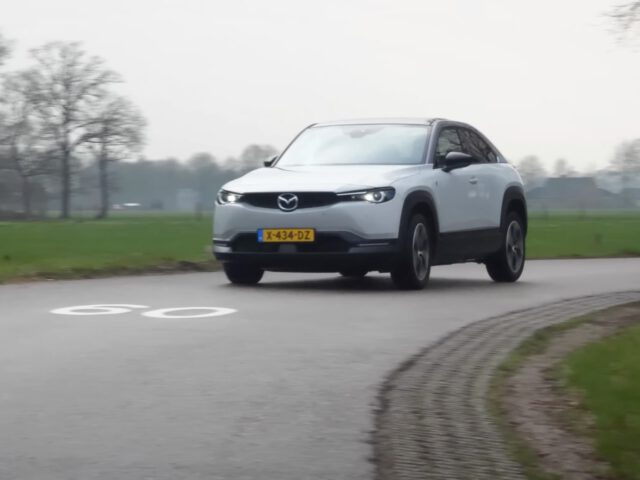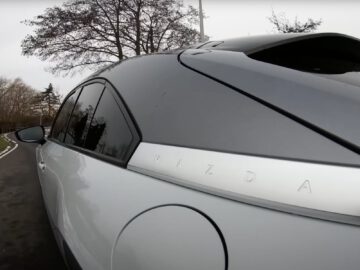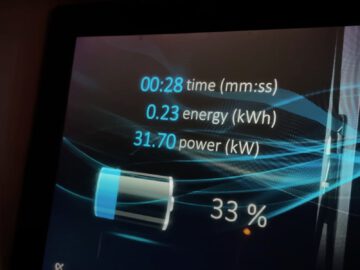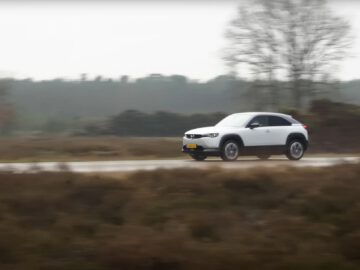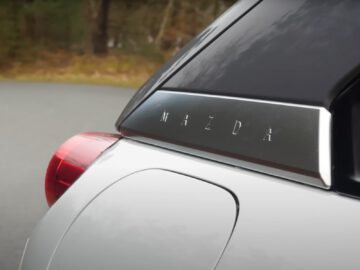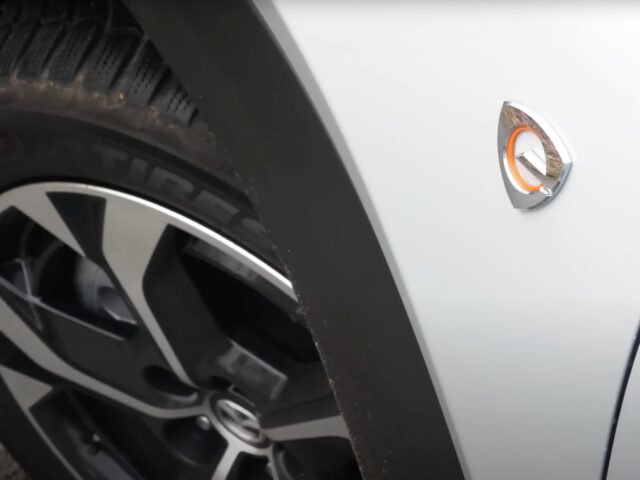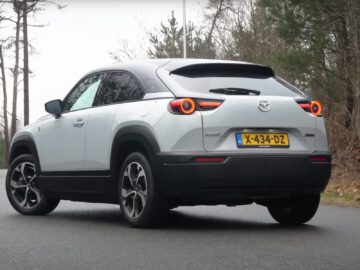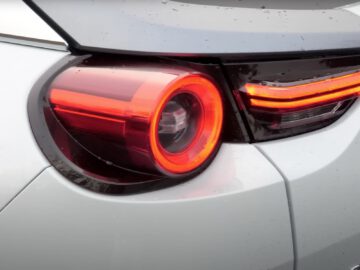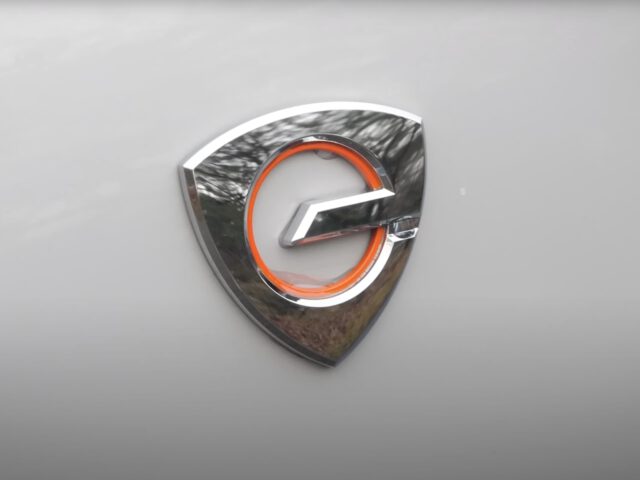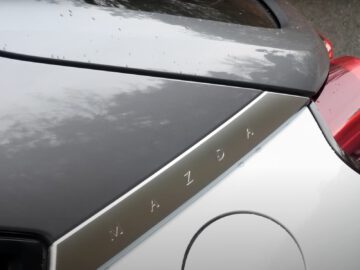Review – Mazda MX-30 e-Skyactiv R-EV (2024), comeback of rotary engine!
Mazda rotary engines
Of course, in this Mazda MX-30 R-EV review, we name the cork for a reason. You’ll find it abundantly in the Mazda MX-30. Not only that: Mazda also made it big with cork. And with rotary engines, of course. The Mazda Cosmo Sport (Mazda 110S) was the first Mazda with rotary engine with two rotors. It entered the market on May 30, 1967. For 45 years, the powertrain was in production. Nearly 2 million Mazda’s with wankel engines sold, as of the RX-7 and RX-8. The Mazda RX-8 went out of production in June 2012. Nice detail: the door design of that RX-8 was also implemented on the MX-30.
Philosophy behind Mazda MX-30
Well, the Mazda MX-30. You already know it with a battery-electric powertrain. Behind the MX-30 is Mazda’s special philosophy. That deserves some explanation. The larger the battery pack, the larger the carbon footprint. “Logical,” Johan Cruijff would say. A lot of CO2 is released during the production of a battery. A battery pack with a range of 500 kilometers releases as much CO2 as a diesel car produces over a driven distance of 80,000 kilometers. With a 35.5 kWh battery, that’s 32,000 kilometers. As a result, the CO2 conversion point of the MX-30 with 35.5 kWh battery and about 200 kilometers of range (WLTP) is much lower. Right now, Mazda sees 35.5 kWh as the ideal battery capacity for the MX-30, as the brand says the model is especially suited for “trips around the neighborhood. A big advantage is that the battery pack is made in Japan at Panasonic. As a result, the brand has short lines with the factory, which in turn saves CO2. So Mazda has looked heavily at the model’s carbon footprint, something many brands could learn from.
This is the MOST ORIGINAL car you can buy NOW – Mazda MX-30 R-EV (2024) Review
Range-extender: a rotary engine
So much for philosophy. Not everyone understands the story behind the MX-30 BEV. For those who want to cover longer distances, Mazda now comes with a version with so-called range-extender in the form of a rotary engine. We’re talking about the Mazda MX-30 e-Skyactiv R-EV, one of the most original cars you can buy right now. Why original? Well, just look at the design. The MX-30 is what you would call a unique crossover, with a historically sound door design as well, because like the RX-8, the model has suicide doors. Small drawback: to open the rear doors, you must first open the front doors. Big advantage: a generous entry to take a seat in the back seat. In terms of technology, the MX-30 R-EV is also unique. Because it is the only (!) plug-in hybrid – and indeed the only car on the market – with a rotary engine.
Mazda MX-30 R-EV specifications.
Let’s name some specifications. The Mazda MX-30 R-EV uses a 125 kW (170 hp) and 260-horsepower electric motor that drives the front wheels. Energy for the electric motor comes from a 188-kilogram 17.8 kWh lithium-ion battery pack, good for a WLTP range of 85 kilometers. The range-extender – an 830 cc rotary engine – delivers a maximum power of 55 kW (75 hp) at a constant speed of 4,500 rpm. At 4,000 rpm, the rotary engine delivers 116 Nm of pulling power. The rotary engine jumps in when additional energy is needed to power the car.
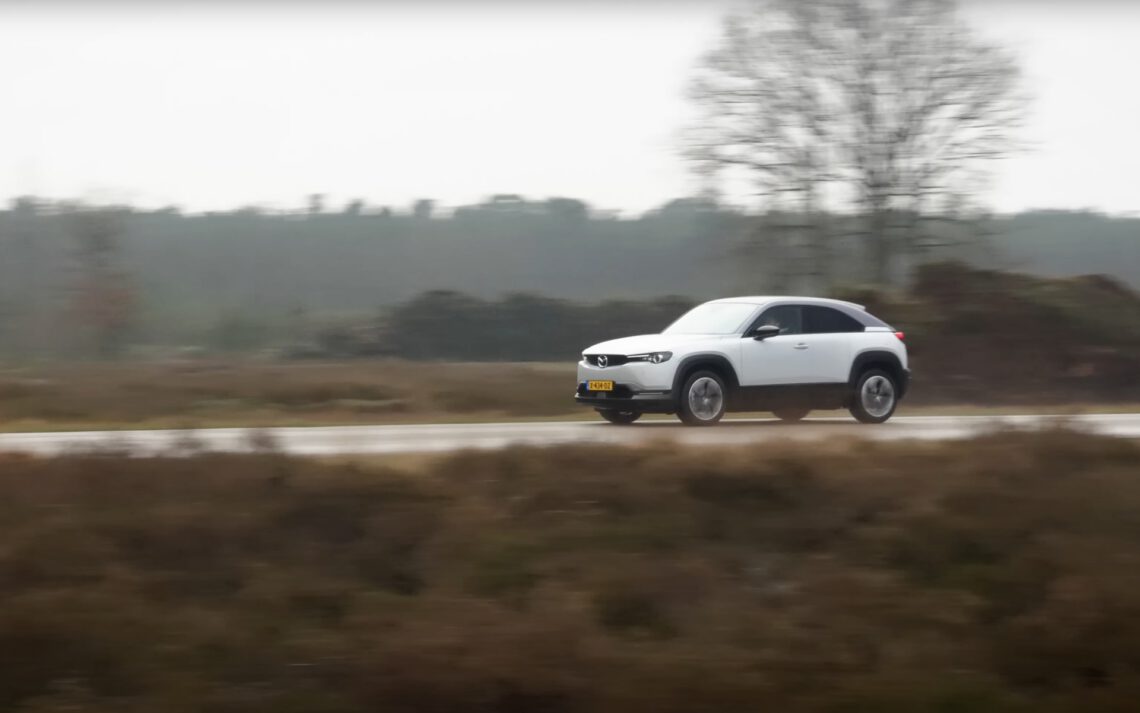
Fast charging with a plug-in hybrid!
The advantage of the MX-30 R-EV is that you can simply refuel and thus quickly resume your journey. The fuel tank has a capacity of 50 liters. The combined range comes out to 680 kilometers (WLTP), a big difference from the MX-30 EV with 200 kilometers (WLTP) of range. Of course, you can also drive the MX-30 R-EV exclusively electric, but then you have to recharge the battery pack. This can be done at 11 kW through an AC charging point or at a fast charger (DC) at 36 kW. The latter is quite special, as few plug-in hybrids can fast charge. Speaking of charging, in the luggage compartment, the MX-30 has a 1,500-watt outlet.
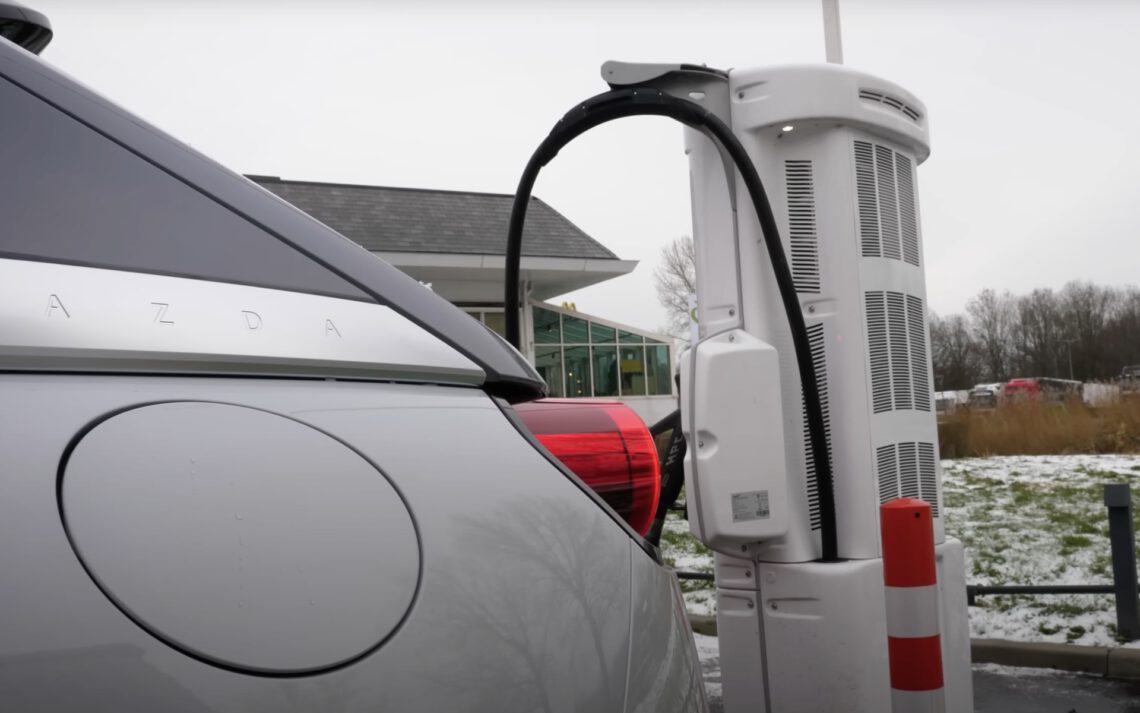
Performance
The performance of the Mazda MX-30 R-EV is worthy of note. The sprint from 0 to 100 km/h takes only 9.1 seconds and the top speed is 140 km/h. In city traffic – where the car often brakes at stoplights – the car is really in its element. After all, you’re continuously recovering power, which reduces energy consumption tremendously. Like the EV, the R-EV is not allowed to tow anything braked, something to consider. If we do name some things to keep in mind: the R-EV is also a bit heavier than the electric version. It weighs 1,753 kilograms, versus 1,620 kilograms for the MX-30 EV.

How do you like such a PHEV with rotary engine?
So how do you like this Mazda with rotary engine in practice? It is a comfortable family crossover with fine handling. The look and feel is fat. You really feel like you’re driving a unique car. Every now and then, the rotary engine turns on to provide energy. You hear it catching on and feel a slight vibration. The sound is typical of a rotary engine, nothing like a conventional fuel engine. The operation of all elements in the interior – beautifully finished with cork details, as mentioned earlier – is child’s play. You control the large display on top of the dashboard by voice control or via the convenient rotary selector, centrally located on the center tunnel. Furthermore, the MX-30 has another separate touchscreen for climate control functions. In terms of ergonomics, Mazda has got its act together here.
Prices Mazda MX-30
Also important: prices. Know that prices of the electric MX-30 – the Mazda MX-30 E-Skyactiv EV 145 as the model is officially called – range from 36,490 to 39,490 euros. With SEPP subsidy – a special grant that allows individuals to receive discounts on battery-electric passenger cars – the starting price of this model even drops to 33,540 euros. That’s a competitive price. The plug-in hybrid is not eligible for SEPP. Prices of the Mazda MX-30 E-Skyactiv R-EV 170 start at 36,990 and go up to 45,590 euros. In the latter case, you do then get the keys to the Edition R, equipped with all the bells and whistles.

Conclusion Mazda MX-30 R-EV
So how to summarize this Mazda MX-30 R-EV? We can think of only one word: original. Mazda has taken a fresh look at the concept of a plug-in hybrid and opted for a rotary engine as a range extender. No other manufacturer takes this approach. First and foremost, Mazda fans are already appalled that the rotary engine is being revived. We are also eager to see what other applications Mazda will use this technology for. Should you choose the electric or plug-in hybrid Mazda MX-30 now? It depends a lot on your own travel patterns. Do you work near your home and are your trips mostly around the house? Then the electric version will give you a fine car. Do you also want to be able to drive further afield, without long loading stops but where you can just fill up quickly? Then such an MX-30 R-EV is worth considering. One thing is certain: you drive the most original car on the entire street.

